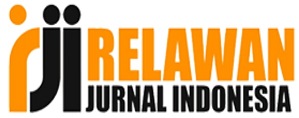MODEL DINAMIS CAUSAL LOOP DIAGRAM (CLD) DALAM PERENCANAAN PARIWISATA OLAHRAGA YANG SMART DAN BERKELANJUTAN
Abstract
Pengembangan pariwisata olahraga yang cerdas dan berkelanjutan bersifat dinamis dan kompleks karena melibatkan banyak pemangku kepentingan yang saling terkait dan beragam, masing-masing dengan tujuan pengelolaan yang berbeda. Hal ini dapat memicu potensi konflik yang tidak diinginkan di antara para pemangku kepentingan. Mengingat tantangan yang dinamis dan kompleks dalam pengembangan pariwisata berkelanjutan, kemampuan untuk mengidentifikasi faktor-faktor kunci menjadi sangat penting. Oleh karena itu, perlu dilakukan analisis mendalam terhadap faktor-faktor yang mempengaruhi rencana penerapan pariwisata olahraga yang cerdas dan berkelanjutan, serta strategi yang diperlukan untuk menganalisis hubungan sebab-akibat dari faktor-faktor tersebut. Dalam penelitian ini, digunakan pendekatan dengan Sistem Causal Loop Diagram (CLD) untuk memetakan hubungan dinamis tersebut. Tujuan penelitian ini adalah untuk menemukan solusi guna mengatasi konflik di antara para pemangku kepentingan melalui pendekatan sistem dengan model Causal Loop Diagram.
References
[2] S. Su, “The current situation and future development of sport tourism in Qingyuan,” 2021.
[3] F. Perna, M. J. Custódio, and V. Oliveira, “Local communities and sport activities expenditures and image: residents’ role in sustainable tourism and recreation,” Eur. J. Tour. Hosp. Recreat., vol. 9, no. 1, pp. 49–59, 2019.
[4] K. Rowe, D. Shilbury, L. Ferkins, and E. Hinckson, “Sport development and physical activity promotion: An integrated model to enhance collaboration and understanding,” Sport Manag. Rev., vol. 16, no. 3, pp. 364–377, 2013.
[5] R. Browar, “Exodus Arena: Cashman Field and the (Re) Development of Sports and Recreation in Downtown Las Vegas, Nevada.” University of Nevada, Las Vegas, 2022.
[6] A. T. BARROSO, “Spanish Identity Construction Through English-Language Co-Productions Funded By Spain, 2005-2019: Stereotypes, Clichés And Semantic Threads In Non-Professional Film Reviews From The Uk, The Us And Spain,” 2022.
[7] B. Mazza, “A Theoretical Model of Strategic Communication for the Sustainable Development of Sport Tourism,” Sustainability, vol. 15, no. 9, p. 7039, 2023.
[8] N. Mihell, “Good Roads 2.0: An Analysis of the Impacts of Rail-Trail Organizations on Strategic Planning, Community-Building and Economic Revitalization.” 2023.
[9] H. Dianat, “A holistic approach to urban resilience: from assessment to planning (the case of Auckland).” ResearchSpace@ Auckland, 2020.
[10] S. E. Husain, Muhammad Zarlis, Herman Mawengkang, “Causal Loop Diagram (CLD) Model In Planning A Sustainable Smart Sharia Tourism,” in Journal of Physics: Conference Series, IOP Publishing, 2020, p. 12099.
[11] L. Baugh Littlejohns, C. Hill, and C. Neudorf, “Diverse approaches to creating and using causal loop diagrams in public health research: recommendations from a scoping review,” Public Health Rev., vol. 42, p. 1604352, 2021.
[12] N. N. Harnika and I. W. Sutama, “Mempromosikan Wisata Kuliner Di Kota Mataram Melalui Media Sosial, Peluang Dan Tantangan,” Samvada J. Ris. Komunikasi, Media, dan Public Relat., vol. 2, no. 2, pp. 124–139, 2023.
[13] K. Anam, “Strategi Implementasi Manajemen Hubungan Masyarakat Untuk Meningkatkan Kepercayaan Dan Partisipasi Masyarakat Di Madrasah Aliyah Al Falah Jatilawang Banyumas.” Institut Agama Islam Negeri Purwokerto (Indonesia), 2021.
[14] R. Leung, “Development of information and communication technology: from e-tourism to smart tourism,” Handb. e-Tourism, pp. 23–55, 2022.
[15] E. Erwin et al., Pengantar & Penerapan Internet Of Things: Konsep Dasar & Penerapan IoT di berbagai Sektor. PT. Sonpedia Publishing Indonesia, 2023.
[16] F. Neto, “A new approach to sustainable tourism development: Moving beyond environmental protection,” in Natural resources forum, Wiley Online Library, 2003, pp. 212–222.
[17] D. J. T. and R. Sharpley, Tourism and Development in the Developing World. 2017.
[18] S. Fatina, T. E. B. Soesilo, and R. P. Tambunan, “Collaborative Integrated Sustainable Tourism Management Model Using System Dynamics: A Case of Labuan Bajo, Indonesia,” Sustainability, vol. 15, no. 15, p. 11937, 2023.
[19] C. Huang et al., “Clinical features of patients infected with 2019 novel coronavirus in Wuhan, China,” Lancet, vol. 395, no. 10223, pp. 497–506, 2020.
[20] Z. Guo and Y. Li, “Analysis of the Decisive Factors of Government Attracting Tourists in Public Management from the Perspective of Environmental Protection,” Probl. Ekorozwoju, vol. 19, no. 1, pp. 285–295, 2024.
[21] Husain, H. Mawengkang, D. Mathelinea, N. Fitriani, and A. B. Detinty, “Designing a dynamic model of waste management to get a sustainable living condition,” AIP Conf. Proc., vol. 2714, 2023, doi: 10.1063/5.0128473.

This work is licensed under a Creative Commons Attribution 4.0 International License.
_uk200_pxl.jpg)









_Barcode3.png)









